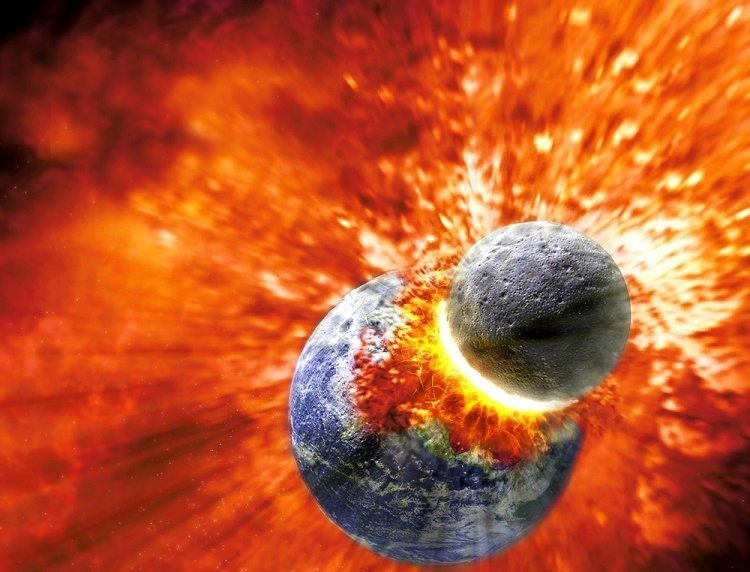The Moon, Earth’s closest neighboring cosmic mass, is a rather peculiar object in the Solar System. Recently, scientists have proposed a new theory that explains how the Moon was formed and helps take a fresh look at the traditional Giant Impact hypothesis.
Compared with the planet around which it revolves, the Moon is relatively small.
Despite the difference in size, however, the Moon’s chemical composition is virtually identical to that of the Earth’s (except for certain volatile compounds that have long vanished since the Giant Impact phase). “This distinguishes the moon from any other large object in the solar system,” explains Sarah Stewart, lead author of the recent study and professor of Planetary Sciences at the University of California – Davis.
What’s the Classic Moon Formation Theory?
The traditional Moon formation theory found in classic textbooks begins just at the end of the formation of our Solar System.
This ushered in the Giant Impact Phase in which extremely hot, planet-sized objects collided with each other. During this time, an object the size of Mars hit what would cool to become Earth.
Part of the mantle material was thrown into outer space but still within reach of Earth’s gravity and eventually condensed into the Moon.
Following that initial impact, the Earth day was just five hours long. As Millions of years passed, the Moon moved away from the Earth, slowing its rotation and resulting in the present 24 hour day.
Yet, the classical theory cannot explain the striking similarity between the composition of the Moon and Earth. Nor can it explain why, if the Moon originated from material revolving around the Earth’s equator, its orbital path is not still around the equator.
“On November 14th, the Moon will be at perigee, or at its closet point to the earth. Weather permitting, we can admire the biggest Supermoon in about 70 years.”
What Really Occurred During the Giant Impact Phase
Professor Stewart and her colleagues proposed the idea that some of the angular momentum of the Earth-Moon system could be transferred to the Earth-Sun system.
This suggests a more vigorous collision earlier in the solar system’s formation process than in the traditional theory.
In the new model, a higher energy collision left a molten mass of material from which the Earth and Moon formed. This Earth had a two-hour day, and its axis spun pointed towards the Sun. This higher energy collision explains how the chemical composition is the same throughout the Earth-Moon system.
The angular momentum was wasted due to the tidal forces of the Moon beginning to move away from the Earth until they reached the point of LaPlace Plane Transition.
At this point, the gravitational forces exerted by the Earth on the Moon became less influential than those exerted by the Sun on the Moon. This distribution didn’t particularly impact the Earth’s orbit around the Sun but flipped the planet to a vertical position.
Over tens of millions of years, the Moon continued to move slowly away from Earth until it reached the Cassini Transition Point at which the Moon declined five degrees, to nearly its current orbit.
The Moon, perhaps the most remarkable feature of our Earthly night, forever inspires wonder and imagination, as many unresolved lunar mysteries persist.
On November 14, the Moon will be at perigee, or at its closest point to the Earth. Weather permitting, we can admire the biggest Supermoon in about 70 years.



















Comments (0)
Most Recent